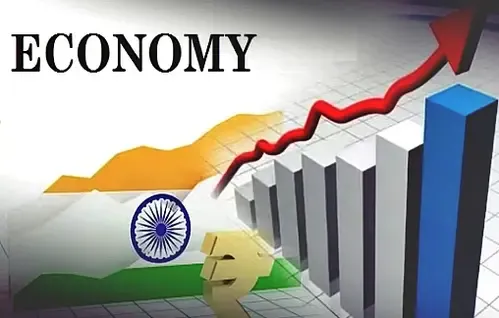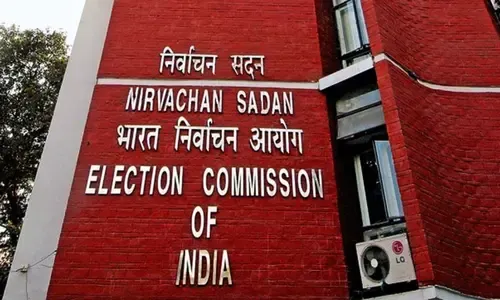Does India’s Growth Path Remain Resilient Despite US Tariffs?

Synopsis
Key Takeaways
- India’s growth trajectory remains positive despite US tariffs.
- S&P Global Ratings upgraded India’s credit rating to "BBB".
- Projected economic growth rate is 6.8% over the next three years.
- Infrastructure improvements are crucial for long-term growth.
- India's low trade dependence acts as a stabilizing factor.
New Delhi, Aug 19 (NationPress) India’s long-term growth outlook remains strong despite the elevated US tariffs, as the government is actively pursuing economic reforms and enhancing living conditions, according to S&P Global Ratings.
The agency upgraded India's sovereign credit rating to "BBB" with a stable outlook after an 18-year interval, citing robust economic expansion, political commitment to fiscal discipline, and a conducive monetary policy aimed at managing inflation.
S&P forecasts that India's economy will grow at an average rate of 6.8 percent over the next three years, driven by solid domestic demand. Furthermore, advancements in infrastructure and connectivity are expected to alleviate structural challenges and further enhance the nation’s long-term growth trajectory.
S&P Global Ratings Director YeeFarn Phua remarked that India has consistently been one of the best-performing economies globally over the past three to four years, outpacing its regional peers.
To sustain this growth momentum, he emphasized the necessity of the government's reform agenda, focus on infrastructure development, and fiscal discipline.
S&P Asia Pacific Economist Vishrut Rana noted that India’s relatively low dependence on trade serves as a protective buffer against the impacts of recent US tariff increases.
Earlier this month, the global credit ratings agency elevated India's long-term unsolicited sovereign credit rating to "BBB" from "BBB-", praising its economic resilience and ongoing fiscal consolidation ahead of the 79th Independence Day.
S&P stated that the stable outlook reflects consistent policy stability and significant infrastructure investment, which are anticipated to foster India’s long-term growth.
This, combined with cautious fiscal and monetary policies that mitigate the government’s high debt and interest obligations, will support the rating for the next 24 months, according to the agency.
Additionally, India's short-term rating was revised from A-3 to A-2, and the transfer and convertibility assessment was upgraded from BBB+ to A-.
S&P indicated it might enhance India's sovereign rating if the fiscal deficit substantially decreases after upgrading its rating from stable to positive in May 2024.
Moreover, the agency raised the long-term issuer credit ratings of three non-banking financial companies (NBFCs) and seven Indian banks.
The NBFCs include Bajaj Finance, Tata Capital, and L&T Finance, while the banks consist of State Bank of India, HDFC Bank, ICICI Bank, Axis Bank, Union Bank of India, Indian Bank, and Kotak Mahindra Bank.









